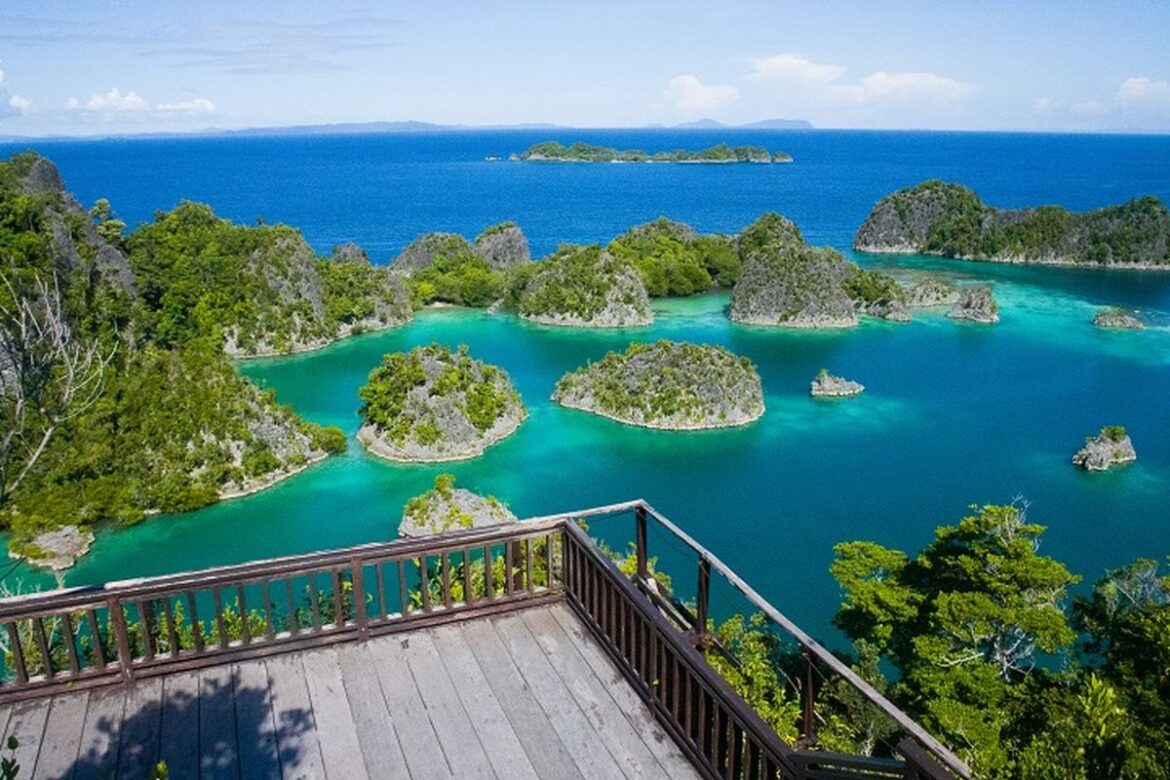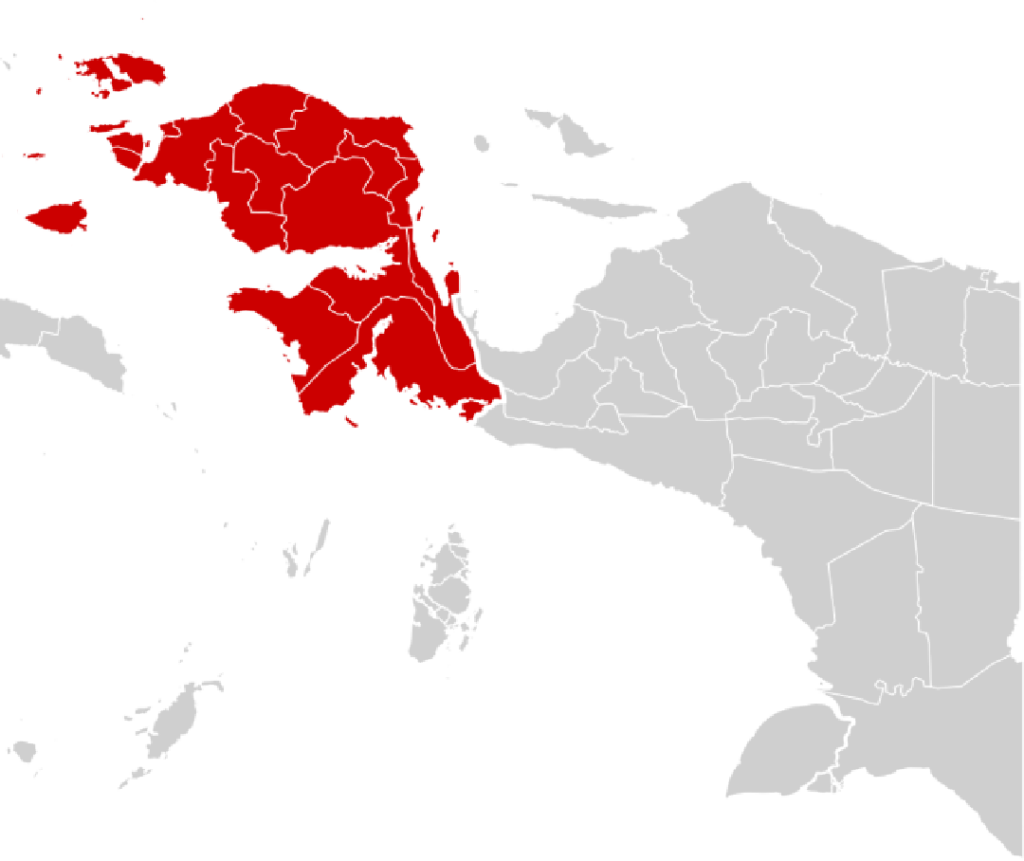In the far eastern reaches of Indonesia, where the sea glows in crystalline shades of turquoise and emerald, lies Raja Ampat—a place often described as Eden for marine life. Long revered for its biodiversity and pristine coral reefs, this remote archipelago in West Papua has now gained global environmental prestige: UNESCO has officially declared Raja Ampat a Biosphere Reserve.
This monumental recognition, announced in late September 2025, elevates Raja Ampat into a new category of international conservation—cementing its dual status as both a UNESCO Global Geopark (2023) and now, a UNESCO Biosphere Reserve. But beyond the title lies a deeper story—of ecological richness, national stewardship, indigenous resilience, and a global call for sustainable development.
Raja Ampat’s Natural Marvels: Biodiversity That Rivals the Amazon
Nestled in the heart of the Coral Triangle, Raja Ampat boasts marine biodiversity unmatched anywhere else on Earth. With over 1,500 species of reef fish, 600 coral species, and dozens of marine mammals, the waters surrounding the islands represent one of the last great strongholds of coral reef ecosystems in the face of global warming and ocean acidification.
On land, the region is no less enchanting. Towering limestone karst islands, dense tropical rainforests, endemic bird species such as the Wilson’s bird-of-paradise, and ancient geological formations dating back hundreds of millions of years make Raja Ampat a living museum of evolution and natural history.
The UNESCO Biosphere Reserve designation is more than ceremonial—it is a commitment to preserve and sustain this immense ecological treasure while supporting the lives of the people who call it home.
What Is a UNESCO Biosphere Reserve?
Under UNESCO’s Man and the Biosphere Programme (MAB), biosphere reserves are areas that promote solutions reconciling the conservation of biodiversity with its sustainable use. They serve three main purposes:
- Conservation of landscapes, ecosystems, species, and genetic variation.
- Development that is socio-culturally and ecologically sustainable.
- Logistic support for education, research, and monitoring related to environmental and development issues.
Raja Ampat now joins over 700 biosphere reserves across 134 countries, becoming a part of an international network focused on sharing best practices in conservation and sustainability.
The Indonesian Government’s Commitment to Environmental Stewardship
Indonesia’s nomination of Raja Ampat for UNESCO’s Biosphere Reserve recognition did not come lightly. Years of groundwork, environmental policy reform, and interagency coordination led to this moment.
Led by BRIN (National Research and Innovation Agency) and supported by local West Papuan governments, the initiative emphasized the importance of protecting Raja Ampat not just for Indonesia, but for the world. Research institutions, NGOs, indigenous communities, and international environmental bodies contributed to a comprehensive proposal highlighting both ecological value and governance strategies.
One of the clearest signs of commitment came when the Indonesian government revoked multiple mining permits (IUPs) in Raja Ampat—a bold move signaling that natural protection takes precedence over extractive profit. The Ministry of Energy and Mineral Resources confirmed that these revocations were permanent and aligned with the area’s Geopark and Biosphere statuses.
A Model of Sustainable Development in Papua
Raja Ampat’s new designation provides a framework for sustainable development that includes conservation, responsible tourism, and community empowerment.
UNESCO Biosphere Reserves operate under a zoning system:
- Core Zones: Strictly protected areas for long-term conservation.
- Buffer Zones: Areas for activities compatible with conservation goals, such as ecotourism or research.
- Transition Zones: Regions where sustainable economic and human activities can flourish.
In Raja Ampat, this zoning model will help manage growing tourism, guide marine and coastal development, and ensure that fishing—a traditional livelihood—remains ecologically balanced.
Crucially, the Biosphere Reserve plan also incorporates local wisdom and customary law (adat), allowing indigenous Papuan communities to co-manage and benefit from conservation efforts.
Tourism, Conservation, and the Road Ahead
Raja Ampat’s natural beauty has made it one of Indonesia’s fastest-growing ecotourism destinations, with divers, photographers, and nature lovers arriving from across the globe. But success has brought risk.
Without proper regulation, tourism can degrade reefs, stress water resources, and displace local traditions. The new UNESCO status offers a powerful tool for enforcing sustainable tourism policies, setting visitor limits, and improving environmental impact assessments.
There’s also a strong focus on capacity building—training local Papuans as dive guides, park rangers, eco-lodge managers, and marine patrol officers, ensuring that the benefits of tourism stay within the community.
Already, signs of positive impact are evident. Villages in Raja Ampat have established community-based marine protected areas, enforcing no-take zones and managing fisheries more sustainably than before. The UNESCO recognition strengthens their ability to access global funding and partnerships for conservation.
Scientific Research and Global Significance
With its newly granted status as a UNESCO Biosphere Reserve, Raja Ampat is now firmly positioned as a dynamic, living laboratory for scientific exploration and environmental discovery. The region has long been recognized by marine biologists and climate scientists as one of the most critical natural sites on the planet. Its coral reefs, renowned for their exceptional biodiversity, have shown a rare resilience to bleaching events—a phenomenon that is devastating reefs elsewhere due to rising ocean temperatures. This resilience offers a unique opportunity for scientists to study natural adaptation mechanisms in the face of climate change, potentially unlocking insights that could inform global reef restoration strategies.
Beyond its marine ecosystems, Raja Ampat’s distinctive karst landscapes, composed of ancient limestone formations, hold paleontological wonders and hidden ecosystems still largely unexplored. These environments not only contribute to global geological knowledge but also provide rich terrain for biological and ecological research. With increased global recognition, Raja Ampat is expected to attract a surge in international collaboration, research funding, and capacity-building initiatives. For young Papuan scientists, this presents an invaluable chance to engage in world-class scientific endeavors while staying rooted in their ancestral lands, bridging indigenous knowledge with modern conservation science.
Challenges Remain: From Climate Change to Illegal Exploitation
Despite the prestige of international recognition, Raja Ampat’s future remains far from secure. The greatest threat looms from climate change itself—warming oceans and acidification could eventually overpower even the most resilient of its coral reefs, pushing them beyond the threshold of recovery. While many reefs in the region have defied global bleaching trends, the accelerating pace of environmental change puts that resilience to a severe test. Compounding this are ongoing human threats.
Illegal fishing, including the use of destructive practices such as blast fishing and cyanide poisoning, still persists in some waters despite regulatory efforts. These methods not only decimate fish populations but also irreversibly damage fragile coral habitats.
Meanwhile, although the Indonesian government has taken decisive steps to cancel mining permits within Raja Ampat, the underlying economic pressures have not vanished. There remains a latent risk that extractive industries may one day return under different guises.
Waste management also presents a growing concern. As tourism rises, especially to remote islands lacking basic infrastructure, unmanaged waste poses a serious threat to both terrestrial and marine ecosystems.
Facing these challenges will require unwavering political will, consistent funding, active participation from local communities, and robust international oversight. Only through coordinated action can Raja Ampat’s beauty and biodiversity be preserved for generations to come.
Global Recognition, Local Empowerment
Perhaps the most hopeful dimension of Raja Ampat’s biosphere status is the way it recenters the role of indigenous Papuans in conservation.
Communities such as Arborek, Sawinggrai, and Yenbuba have long practiced sasi, a traditional system of natural resource management that includes rotational harvesting and spiritual taboos. UNESCO’s framework allows this ancient wisdom to integrate with modern science—a powerful fusion that respects culture and protects nature.
The Indonesian government has pledged to support capacity development, infrastructure for clean water and energy, and access to education in these communities—ensuring that conservation is not just for visitors or foreign researchers, but for those who’ve protected these lands for generations.
Conclusion
With the designation of Raja Ampat as a UNESCO Biosphere Reserve, the world has once again turned its eyes toward Papua—not for conflict or controversy, but for celebration. It is a moment of pride for Indonesia, a gift to the planet, and a promise to future generations.
But the real work begins now. Designation is only the first chapter. To write a legacy of resilience, Raja Ampat must be protected not only by law but also by love—of its people, its coral gardens, its ancient rocks, and its endless skies.
The waves that lap Raja Ampat’s shores carry a whisper to the world: we still have time to get this right.


